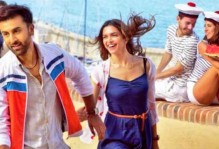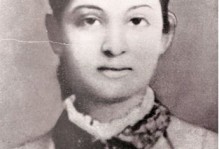Museum of Storytelling
Background sketch of the strand with the warehouses and goods being unloaded from a cargo boat. Right corner pic of a warehouse in the strand. Created logo and drawing of the recommended Museum .
Editor’s Note: There is one problem in knowing Prof Aloke Kumar. He like a conjurer brings out brilliant ideas from thin air, and makes you feel miserable that why did you not think of it in the first place. The ideas are novel, innovative, out of the box , grounded in the present and very much doable. And one such idea which struck me as brilliant is his proposition of building a Museum of Story Telling in Kolkata. A place where you go to listen stories and also to live with them. And all I could manage on hearing the idea is “Wow!”. I wrote to Prof Aloke Kumar that we will be publishing his article on the idea of the Story Telling Museum in probashionline.com. And so taken are we with the concept that this article of Prof Aloke Kumar is being published while we await his formal permission, which we know he will not deny. Thank you Alokda. Till people think about the city the way you do, there is still hope beyond the white and the blue.
Over and over again I am told by certain section of the faculty in Universities of not being a lecturer but a storyteller. It is true. I am not ashamed of it. I deploy a teaching method which is an amalgam of communication, including: talking, listening, presentation, case studies, personal experience, histrionics and participation which can be expressed in a single Sanskrit word as ‘Sutradhar’, meaning one who recites with traditional skills. The word has no equivalent in English, but the nearest is a French word, ‘Raconteur’, meaning; a person who tells stories and anecdotes with skill and wit.
Storytelling is an ancient and intimate tradition between the storyteller and the listener. The storyteller and the listeners are physically close,often seated together in a huddle. Through the telling of the story people become psychically close, developing a connection to one another through the communal experience.
The storyteller reveals, and thus shares, self through storytelling and the listeners reveal and share themselves through their reception of the story. The intimacy and connection is deepened by the flexibility of oral storytelling which allows the tale to be molded according to the needs of the audience and location or environment of the telling. Listeners also experience the urgency of a creative process taking place in their presence and they experience the empowerment of being a part of that creative process. Storytelling creates a personal bond with the teller and the audience.
From Upendrakishore Ray to Sukumar Roy . Ranindranath Tagore to Ashapurna Debi From Satyajit Ray to Sunil Gangopadhayay.Narayan Gangopadhyay to Sirshendu Mukhopadhyay and more. Lewis Carroll’s Wonderland to JRR Tolkien’s to CS Lewis’s Narnia.
The flexibility of oral storytelling extends to the teller. Each teller will incorporate their own personality and may choose to add characters into the story. As a result, there will be numerous variations of a single story. Some tellers consider anything outside the narrative as extraneous while other storytellers choose to enhance their telling of the tale with the addition of visual and audio tools, specific actions and creative strategies and devices.
I suggest we work towards the creation of a museum dedicated to storytelling in the city.
The Story Museum can be built in in the New Town at Rajarhat or one of these old warehouses in the strand. These two storied buildings in the strand are from the colonial days. They were used for storing goods which were brought by waterways and stored here to be taken to the city. The House has its roots in the Victorian era, when Kolkata began producing children’s stories that are known and loved across the world.
Children will be able to listen to stories at the museum, to “walk through” them, to create stories of their own and to “open windows and go through doorways into other worlds”. The museum will be a temple to the children’s story. Dreams do come true: a real home for storytelling.
The Story Museum will be a wonderful gift for Kolkata, where so many stories have begun, to the whole world. The whole atmosphere of the city is rich with fantasy. Indeed, the very idea of having a museum devoted to story is itself such a fantastical notion than no other city in the world could have given birth to it.
Storytelling is a discipline that has a history as long as the human race. Storytellers inhabit the characters of the tale, while still maintaining the status as narrator of the events, they are both first person and third person perspectives in one. Storytelling can help bring historical and cultural context to works of art to historical objects. The museum will have storyteller to add depth and experience to exhibitions or programs by spinning children’s tales, appearing as a costume character to aid in an immersive environment and to aid in depicting different cultures by sharing traditions, histories, folklore and myths.
The Storyteller concerns itself with the incommunicability of experiences in the modern world. Children have become unable to reflect accurately upon their experiences, in part because of the dramatic influx and rapid distribution of information in the early twentieth century. Moreover the rise of information is incompatible with storytelling, and contributed to the diminished efficacy of the storyteller.
Earlier people received information locally. Stories were spread verbally, from person to person, not read or watched. Moreover, prior to the rise of information, family get together was a time of gathering. Family and friends would come together and discuss stories going around. The onslaught of internet crystallized a change in the perception of story. In addition, it appeared as a symptom for the rise of information usage. Specifically, these transformations in societal norms were not sudden changes; rather, they were progressive movements that slowly seeped into the modern world as technological usage expanded.
Children now struggle to communicate their experiences. They are simply unable to communicate their experiences. Specifically, they live in a world transformed. For many, the addition of modern technology, such as mass media, was disconcerting. A generation that had gone to school in tram car now stands under the open sky in a concrete jungle with everything changed except the clouds, and beneath these clouds, in a field of forces of destructive torrents and explosions a fragile human life.
People can come and read here. The spirit of storytelling will be here. There will be a storytelling theatre. The use of theatre and theatrical for educational, informative, and entertainment purposes. Varieties of museum characters, puppetry, movement and music. Actors portraying historical characters will perform in first person, as if he or she were an actual person from the era or culture he or she is representing. With puppetry, actors can tell stories, create multiple characters, and portray a variety of cultures. Theatrical techniques can be used for third-person interpretation, where an actor or trained presenter uses costumes, props. lighting, or special effects to convey stories without necessarily portraying a character. The museum of storytelling will open into magical gardens. It’s hardly surprising that something like Thakurmar Jhuli can come straight out in the Kolkata Museum of Storytelling.
The idea needs planning a feasibility study to establish how to create the Story Museum, and is also putting together a major public campaign to raise the fund it needs. Or get the state or a Public-private project to fund to sponsor the project.
Mamata Baneree our Chief Minister. Debashis Sen ,Chairman & Managing Director WBHIDCO and Principal Secretary. Urban Development Department, Govt. of West Bengal. Harsh Neotia the entrepreneurial businessman. Are you reading this ?





Wonderful idea…may be one day it will happen so.